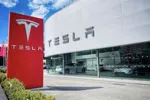Car makers are not communicating new CO2 emissions and fuel economy data established under the new WLTP regime to car buyers.
BearingPoint found that just over half of car makers (58%) have adapted their online configurator tools to communicate the effect different specifications have on CO2 emissions.
The WLTP was developed with the aim of being used as a global test cycle so pollutant and CO2 emissions as well as ensuring fuel and energy consumption values would be comparable worldwide and better reflect everyday driving conditions; as well as improve transparency in communication with customers.
All vehicles registered from September 1 must be homologated under the new test, which accounts for the variance in emissions caused by optioanl extras such as sunroofs and alloy wheels.
All of the 19 manufacturers in the study provided at least one of the surveyed markets with a dedicated section of their website explaining to their customers the changes introduced by WLTP.
But, just over half (10) of the companies in the survey have adapted the online configurator to change CO2 and consumption values when different wheels and tyres are selected.
None of the automakers studied display the energy efficiency classes at the end of the calculation throughout the EU.
Mandy Smith, partner at BearingPoint, said: “Online car configurators are one of the most important communication platforms for automakers to provide information about CO2 and consumption information on their vehicles to existing and potential customers.
“Providing information to customers on WLTP is key, and automakers can’t escape implementing it.”
She believes the journey to incorporate WLTP principles in online car configurators will still be a long one, but that the “WLTP generation” of online car configurators should:
- Present an explanation in clear, customer-oriented language of the changes introduced by WLTP along with the related implementation path and key dates (dedicated WLTP information page)
- Make customers aware of the consumption and emission ranges implied by their initial selection at the first stages of the configuration
- Show the impacts that optional features have on emissions and consumption
- Update the impacts on emissions and consumption during the configuration based on the selected options
- Provide consumption and emission specific results for the configured vehicle. This is essential to make the customer aware of the environmental taxes she or he will pay














Login to comment
Comments
No comments have been made yet.